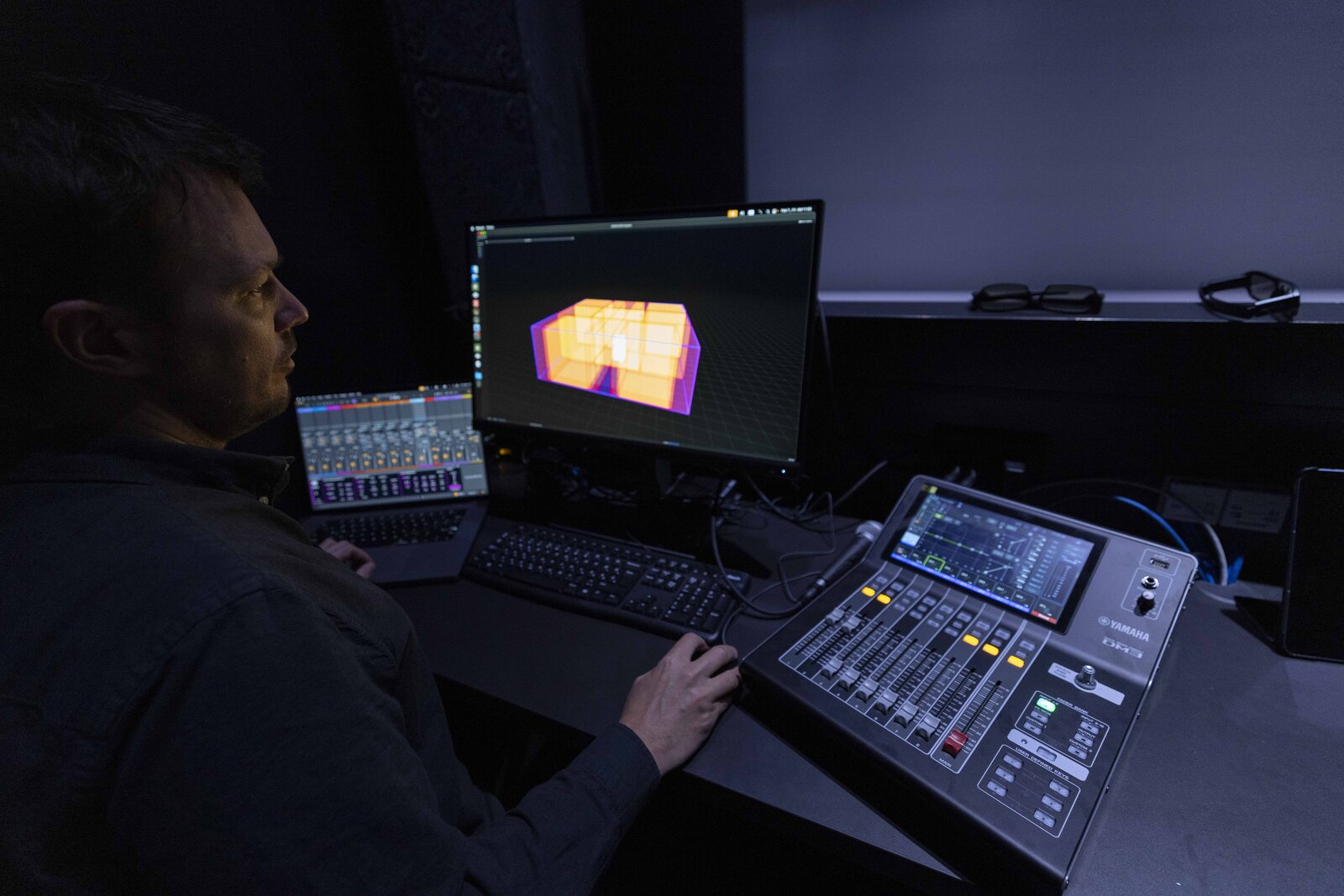CODE sound technology - Interview with Poul Holleman
What makes CODE's sound system so special? How do sound and image work together during a projection? We asked Poul Holleman, head of 4DSOUND.

Poul Holleman
What can we know about the sound system in CODE? Why is it special?
The 4DSOUND system at CODE is designed to transform the immersive experience by seamlessly blending visuals with sound. The system is almost invisible, with around twenty five strategically placed speakers in the ceiling, filling the entire space while keeping the technology subtle and unobtrusive. This setup creates a profound, almost physical presence for sound, allowing it to move and surprise visitors or welcome them warmly. What makes 4DSOUND unique is its ability to not only complement but to deepen the visual experience, shifting from realistic to surreal and enriching the narrative in both media. The system was specifically designed for the acoustically challenging space, ensuring that sound quality is not only top-tier but also harmonizes with the environment rather than competing with it.
How do you think sound technology can support the different areas of a digital experience centre like CODE?
For me, sound is essential to enhancing the digital experience, particularly in a setting like CODE. Art, at its core, is a form of communication between the creator and the audience, and spatial sound serves as a dynamic medium that goes beyond traditional sound reproduction, actually bringing us closer to how we experience sound in our day-to-day lives. 4DSOUND offers boundless possibilities for conveying emotions, stories, and the intricate layers of a composition. With its immersive quality, spatial sound can transform environments and moods, deeply influencing the emotional and intellectual response of the audience. At CODE, sound is thoughtfully integrated into exhibitions and experiences from the very start, ensuring that it's not an afterthought but an integral part of the experience. While we often consider ourselves primarily visual beings, sound has a powerful emotional impact. Sound is omnidirectional, evoking immediate reactions like fear, surprise, or wonder - emotions that shape how we perceive the world around us.
How does sound complement the image? (Or rather: how do they complement each other?)
Sound and image do more than just complement each other - they define the mood and context of an experience. Sound amplifies emotions in ways that visuals alone cannot, whether it’s creating calm, suspense, or discomfort. In an exhibition like CODE, artists have the freedom to explore an incredible range of possibilities where sound and image work in harmony to create an all-encompassing, immersive experience. The balance between the two is crucial for forming a cohesive narrative, where each element enhances and elevates the other. Additionally, as an advocate of my medium, I’ve found that experiencing sound in total darkness can be almost as visual as sight itself. It sparks the imagination, making the physical space disappear and allowing the scene to expand in endless ways. Darkness, paired with sound, is something I encourage - because it frees the mind to wander.
Have you ever had to come up with something strange or unexpected in your work that you never thought would work? What was it?
In the early days of designing the 4DSOUND technology, we were eager to explore all the technical possibilities, aiming to create complex, dense soundscapes that showcased the system's potential. But we quickly realized that simplicity often has a much greater impact. By toning down the effects and focusing on specific sound elements, I found that the spatialization became more profound and engaging. This minimalism allowed listeners to connect with the sound more deeply, revealing a richer, more nuanced experience. One of the early prototypes involved something as simple as moving pink noise through space. It was a basic, almost random sound pattern, but it was so compelling and immersive that it surprised me how such simplicity could create such a lasting and captivating experience.
Speaking of sounds. Are there any sounds or noises (even in everyday life) that you particularly like?
I can find myself drawn to environmental sounds that transform into drones. I can enjoy gentle hiss of wind moving through the leaves in nature or the whistling sound of wind against urban objects, these sounds create a distinct sense of space and movement. The randomness, combined with the constant force of the wind, makes for a dynamic, almost meditative experience. These sounds may seem mundane, but they have a unique ability to evoke a sense of place, offering both tonal and atonal qualities that deepen their complexity and allure. These are examples of something we carefully consider in our approach to spatial sound synthesis within our software design - how seemingly simple sounds can hold depth and meaning, transforming them into an expressive artistic instrument.